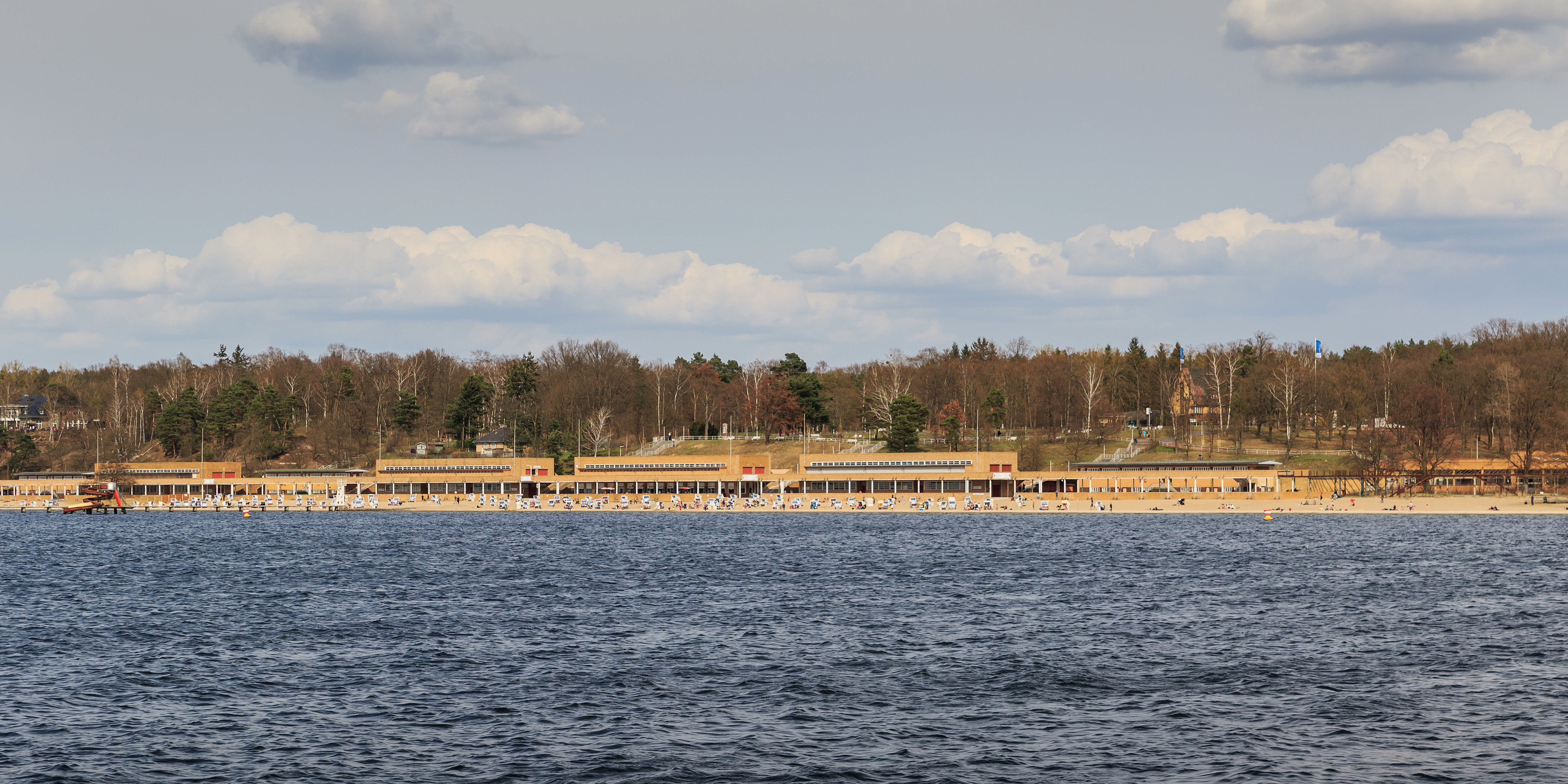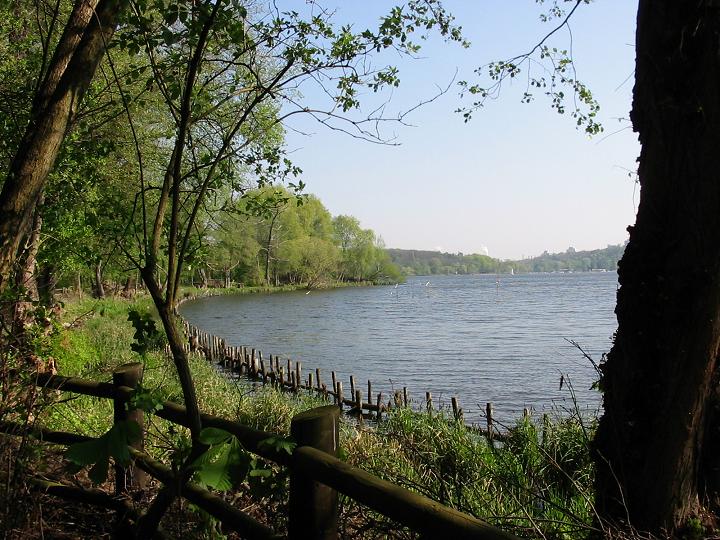|
Berlin-Nikolassee
Nikolassee () is a locality (''Ortsteil'') of Berlin in the borough (''Bezirk'') of Steglitz-Zehlendorf, named after the small Nikolassee lake. Located in the affluent Southwest of the city, the area comprises parts of the Schlachtensee neighbourhood and the eastern shore of the Großer Wannsee lake with the large ''Strandbad Wannsee ''lido, as well as the islets of Schwanenwerder and Lindwerder. Geography Nikolassee is located on the Bundesstraße 1 road from the Berlin city centre to Potsdam, south of the extended Grunewald forest. The river Havel separates it from Kladow and Gatow in the Spandau borough. Other localities bordering with Nikolassee are Wannsee, Zehlendorf and Grunewald (this one in Charlottenburg-Wilmersdorf district ). Its southern neighbour Kleinmachnow is a municipality in the Potsdam-Mittelmark district of Brandenburg. The residential areas of Nikolassee and Grunewald are separated by the Grunewald forest. History Once part of the Düppel manor, from 190 ... [...More Info...] [...Related Items...] OR: [Wikipedia] [Google] [Baidu] |
Berlin-Nikolassee Station
station () is a railway station in the area of Berlin, Germany. It is served by trains of the , and is notable for its prominent Neo-Gothic entrance building. Overview line S1 operates to and from central Berlin via the ' and terminates one station down the line at . Line S7 operates to and from central Berlin via the ', and passes through Wannsee on its route to '. The two lines are served by separate island platforms on different alignments, with the S1 platform at a lower level than the S7 platform. A pair of main line tracks run parallel to the S7, but trains on these lines do not stop at , and no platforms are provided. The two platforms are linked to each other, and to the station building, by walkways. A flying junction to the west of the station keeps the main line segregated from the lines. The same flying junction brings the two lines together, with the S1 lines between the S7 lines so as to allow cross-platform interchange A cross-platform interchange is ... [...More Info...] [...Related Items...] OR: [Wikipedia] [Google] [Baidu] |
Berlin-Blankenheim Railway
The Berlin-Blankenheim railway or Wetzlarer Bahn ("Wetzlar Railway") is a railway line in the German states of Berlin, Brandenburg and Saxony-Anhalt. It is a section of the Kanonenbahn (''Cannons Railway'') between Berlin and Metz, built between 1877 and 1882. Wetzlar used to be an important rail junction on the ''Kanonenbahn''. The Berlin-Blankenheim line originally ran from Berlin, via Bad Belzig, Güsten, Sandersleben to Blankenheim, where a remnant of it still joins the Halle–Kassel line. The Wiesenburg– Güsten section has carried no traffic since 2004 and is now closed. Only the Berlin–Wiesenburg section is electrified. The Sandersleben–Blankenheim section has only a single track, while the remainder of the still-operating parts of the line is duplicated. History The track was built at the instigation of the Prussian government between 1877 and 1882 as a direct militarily strategic railway, bypassing urban areas, connecting to Alsace-Lorraine, which had bee ... [...More Info...] [...Related Items...] OR: [Wikipedia] [Google] [Baidu] |
Steglitz-Zehlendorf
Steglitz-Zehlendorf () is the sixth Boroughs of Berlin, borough of Berlin, formed in Berlin's 2001 administrative reform by merging the former boroughs of Steglitz and Zehlendorf, Berlin, Zehlendorf. Home to the Free University of Berlin, the Berlin Botanical Garden and Botanical Museum, Berlin Botanical Garden, and a variety of museums and art collections, Steglitz-Zehlendorf is an important hub for research, science and culture in Berlin. It is known to be the wealthiest borough of Berlin, having the city's highest median household income. History The first mention of a present-day locality in the district by name was Lankwitz (Lancewitz) in 1239. It is assumed that Slavic and German settlements were established at the Schlachtensee (lake), Schlachtensee and Krumme Lanke lakes after 1200 at the latest. The first documented mention of Zehlendorf (Berlin), Zehlendorf (then Cedelendorp) dates back to 1242. Here the Lehnin Abbey bought the settlement and kept it until 1542. Frede ... [...More Info...] [...Related Items...] OR: [Wikipedia] [Google] [Baidu] |
Strandbad Wannsee
The Strandbad Wannsee is an open-air Lido (swimming pool), lido on the eastern shore of Großer Wannsee lake, a large bay of the Havel river in Berlin, Germany. Opened in 1907, it is one of the largest inland lidos in Europe, with a beach that is long and wide, replenished with sand from the Baltic Sea, Baltic coast. The entire ensemble of long, low buildings that appear to grow out of the underlying sandhills were designed by Richard Ermisch and fellow architect Martin Wagner (architect), Martin Wagner in 1929–1930; it is today placed under Cultural heritage management, monumental protection. Location The area is part of the Nikolassee locality (not of Wannsee), in the Steglitz-Zehlendorf borough, in southwestern Berlin. The lido stretches along the northern section of the lake's east bank, at the eastern end of the ''Breite'', the broad stretch of the Havel between Kladow and Wannsee, close to Schwanenwerder island. Strandbad Wannsee is run as a municipal swimming bath by ... [...More Info...] [...Related Items...] OR: [Wikipedia] [Google] [Baidu] |
Grunewald (forest)
Grunewald () is a German forest located in the western side of Berlin on the east side of the Havel, mainly in the Grunewald (locality), Grunewald locality. At it is the largest green area in the city of Berlin. Geography The forest occupies, on the western side, 3/4 of the Grunewald (locality), Grunewald locality, a small portion of the southern part of Westend (Berlin), Westend (both in the Charlottenburg-Wilmersdorf borough); a great part of Nikolassee, the northern side of Zehlendorf (Berlin), Zehlendorf and the northwestern part of Dahlem (Berlin), Dahlem (all 3 in the Steglitz-Zehlendorf borough). It is close to the border of the neighborhood of Wannsee and its Großer Wannsee, lake, and is near the Düppel (Berlin), Düppel forest. It is divided by the Havel river from the localities of Kladow, Gatow and Wilhelmstadt (all in the Spandau borough). It also borders the locality of Schmargendorf. There are two islets located off the forest in the Havel (Lindwerder (Havel), L ... [...More Info...] [...Related Items...] OR: [Wikipedia] [Google] [Baidu] |
Kleinmachnow
Kleinmachnow is a municipality in the Potsdam-Mittelmark district, in Brandenburg, Germany. It is situated south-west of the borough of Steglitz-Zehlendorf and east of Potsdam. First mentioned in the Landbuch of Karl IV in 1375, the Kleinmachnow played an important role at the Bäke beek / creek crossing, secured by multiple medieval castles. The last of these castles (none of which are preserved today) belonged to the Knights of Hake, a family who shaped the local history until the 20th century. The replacement of the Bäke (beek / creek) with the Teltow Canal in 1906 brought the village the now listed historic Kleinmachnow flood-gate. In the first half of the 20th century, Kleinmachnow grew from a rural village to a suburban municipality of the Berlin metropolitan area. The construction of the Berlin Wall cut Kleinmachnow off from West Berlin. The community's location near the border meant it was relatively isolated in the GDR. Since the German reunification, Kleinmachnow ... [...More Info...] [...Related Items...] OR: [Wikipedia] [Google] [Baidu] |
Potsdam-Mittelmark
Potsdam-Mittelmark is a ''Kreis'' (district) in the western part of Brandenburg, Germany. Its neighbouring administrative units are (clockwise from the north) the district of Havelland (district), Havelland, the free cities of Brandenburg (town), Brandenburg and Potsdam, the state of Berlin, the district of Teltow-Fläming, and the districts of Wittenberg (district), Wittenberg, Anhalt-Bitterfeld and Jerichower Land in Saxony-Anhalt. Geography The district includes the southern banks of the Havel river and the northern parts of the Fläming (a wooded hill chain). There are three nature parks in the district: High Fläming Nature Park, Nuthe-Nieplitz Nature Park and Westhavelland Nature Park. History The district was created in 1993 by merging the previous districts of Belzig, Brandenburg-Land and Potsdam-Land. Demography File:Bevölkerungsentwicklung Landkreis Potsdam-Mittelmark.pdf, Development of Population since 1875 within the Current Boundaries (Blue Line: Population; Dot ... [...More Info...] [...Related Items...] OR: [Wikipedia] [Google] [Baidu] |
Brandenburg
Brandenburg, officially the State of Brandenburg, is a States of Germany, state in northeastern Germany. Brandenburg borders Poland and the states of Berlin, Mecklenburg-Vorpommern, Lower Saxony, Saxony-Anhalt, and Saxony. It is the List of German states by area, fifth-largest German state by area and the List of German states by population, tenth-most populous, with 2.5 million residents. Potsdam is the state capital and largest city. Other major towns are Cottbus, Brandenburg an der Havel and Frankfurt (Oder). Brandenburg surrounds the national capital and city-state of Berlin. Together they form the Berlin/Brandenburg Metropolitan Region, the third-largest Metropolitan regions in Germany, metropolitan area in Germany. There was Fusion of Berlin and Brandenburg#1996 fusion attempt, an unsuccessful attempt to unify both states in 1996, however the states still cooperate on many matters. Brandenburg originated in the Northern March in the 900s AD, from areas conquered from the ... [...More Info...] [...Related Items...] OR: [Wikipedia] [Google] [Baidu] |
Wannsee Railway
The Wannsee Railway () is a suburban railway in Berlin running from Potsdamer Platz via the Ring line station of Schöneberg to Wannsee station on Großer Wannsee, a lake after which it is named. Today it is a section of the Berlin S-Bahn line S1. History Beginnings The original section of the Wannsee Railway was built in 1874 and branched off at Zehlendorf from the Potsdam trunk line and rejoined the line at the current Griebnitzsee station. After the opening of the Lichterfelde West station on the trunk line in 1872 to serve the new suburb of mansions only (''villa colony'', German: ''Villenkolonie'') of Lichterfelde-West, the new emerging suburbs of Schlachtensee, Wannsee and Düppel sought their own rail connection. The official opening of the extension was made on 1 June 1874. Unlike the new Lichterfelde West station, which was completely financed by the builder of the villa colony, Johann Anton Wilhelm von Carstenn, the planning and construction of the new sta ... [...More Info...] [...Related Items...] OR: [Wikipedia] [Google] [Baidu] |
Düppel (Berlin)
Düppel (after Dybbøl, South Jutland, Denmark) is the name of a neighbourhood as well as of an adjacent forest in the borough of Steglitz-Zehlendorf in southwestern Berlin, Germany. The neighbourhood itself is a part of the Zehlendorf locality. History Archaeological finds indicate a Slavic settlement established about 1170. In 1242 the Margraves John I and Otto III of Brandenburg sold the area together with the neighbouring village of Zehlendorf to Lehnin Abbey. The Slavic village became abandoned about 1300, from 1975 on parts of it have been reconstructed as an open-air museum. In 1830 royal forester Friedrich Bensch built a mansion here, that was acquired by Prince Frederick Charles of Prussia in 1859. In view of his victorious command in the 1864 Battle of Dybbøl he received the title "Düppel Manor" for his estates. In 1928 Düppel was incorporated into Greater Berlin. After World War II Düppel was part of the American sector of West Berlin. In January 1946, the ... [...More Info...] [...Related Items...] OR: [Wikipedia] [Google] [Baidu] |
Grunewald (locality)
Grunewald () is a locality within the Berlin borough of Charlottenburg-Wilmersdorf. Until 2001 administrative reform it was part of the former district of Wilmersdorf. Grunewald forest lies partly within the locality and is Berlin's largest green area. Next to Lichterfelde West, Dahlem and Westend, it is part of the affluent Berlin "Villenbogen", a row of suburbs completely made up of 19th century mansions. Geography The locality is situated in the western side of the city and is separated from Spandau by the river Havel. It borders with the localities of Westend, Halensee, Schmargendorf, Wilhelmstadt, Gatow (both in Spandau district), Nikolassee, Zehlendorf and Dahlem (all three in Steglitz-Zehlendorf district). The Grunewald forest is 10 km away from Berlin-Mitte. History Etymology The name derives from the Grunewald hunting lodge of 1543, the oldest preserved castle in Berlin, which is, however, officially located within the adjacent Dahlem locality. It was ere ... [...More Info...] [...Related Items...] OR: [Wikipedia] [Google] [Baidu] |




